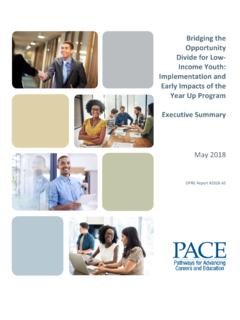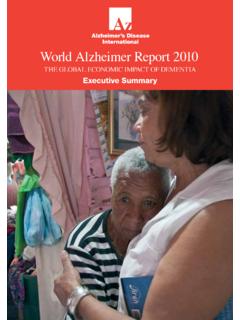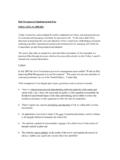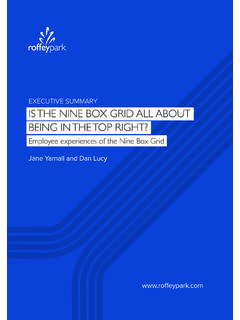Transcription of RESEARCH REPORT 062 - Health and Safety Executive
1 HSE Health & Safety Executive Factoring the human into Safety : Translating RESEARCH into practice Executive summary for: Vol. 1 Benchmarking (RR 059/2002) Vol. 2 - Accident Analyses (RR 060/2002) Vol. 3 - Crew Resource Management (RR 061/2002) Prepared by the University of Aberdeen for the Health and Safety Executive 2003 RESEARCH REPORT 062 HSE Health & Safety Executive Factoring the human into Safety : Translating RESEARCH into practice Executive summary for: Vol. 1 Benchmarking (RR 059/2002) Vol. 2 - Accident Analyses (RR 060/2002) Vol. 3 - Crew Resource Management (RR 061/2002) Kathryn Mearns, Sean Whitaker, Rhona Flin, Rachael Gordon and Paul O Connor Industrial Psychology Group University of Aberdeen King s College Aberdeen AB24 3FX This is the Executive summary of the final REPORT for the project 3661 Factoring the Human into Safety : Translating RESEARCH into Practice , sponsored by: Agip UK Ltd; AMEC Process & Energy Ltd.
2 ; BP-AMOCO; Coflexip Stena Offshore Ltd; Conoco UK Ltd; Elf Exploration UK PLC; Halliburton Brown Health and Safety Executive (OSD); Kerr-McGee North Sea Ltd; Salamis SGB Ltd; Transocean Sedco Forex; Shell (UK) Expro; Texaco North Sea (UK) Ltd; Total Fina PLC. Volume 1 of the REPORT is Benchmarking Human and Organisational Factors in Offshore Safety (RR 059/2002). Volume 2 of the REPORT is The Development and Evaluation of a Human Factors Accident and Near Miss Reporting Form for the Offshore Industry (RR 060/2002). Volume 3 of the REPORT is Crew Resource Management Training for Offshore Operations . (RR 061/2002). This REPORT and the work it describes were funded by the HSE. Its contents, including any opinions and/or conclusions expressed, are those of the authors alone and do not necessarily reflect HSE policy. HSE BOOKS Crown copyright 2003 First published 2003 ISBN 0 7176 2698 9 All rights reserved.
3 No part of this publication may be reproduced, stored in a retrieval system, or transmitted in any form or by any means (electronic, mechanical, photocopying, recording or otherwise) without the prior written permission of the copyright owner. Applications for reproduction should be made in writing to: Licensing Division, Her Majesty's Stationery Office, St Clements House, 2-16 Colegate, Norwich NR3 1BQ or by e-mail to ii HSE RR REPORT 062/2002 Factoring the Human into Safety : Translating RESEARCH into Practice Executive summary This is the Executive summary of the final REPORT for the project 3661 Factoring the Human into Safety : Translating RESEARCH into Practice , sponsored by: Agip UK Ltd; AMEC Process & Energy Ltd.; BP-AMOCO; Coflexip Stena Offshore Ltd; Conoco UK Ltd; Elf Exploration UK PLC; Halliburton Brown Health & Safety Executive (OSD); Kerr-McGee North Sea Ltd; Salamis SGB Ltd; Transocean Sedco Forex; Shell (UK) Expro; Texaco North Sea (UK) Ltd; Total Fina PLC.
4 Volume 1 of the REPORT is Benchmarking Human and Organisational Factors in Offshore Safety (RR 059/2002). Volume 2 of the REPORT is The Development and Evaluation of a Human Factors Accident and Near Miss Reporting Form for the Offshore Industry (RR 060/2002). Volume 3 of the REPORT is Crew Resource Management Training for Offshore Operations . (RR 061/2002). The overall aim of the project was to develop practical programmes for the offshore oil and gas industry that can lead to: a) A better understanding of human and organisational factors in Safety , b) Continued improvements in Safety management and c) An improved Safety culture throughout the industry as a whole. In order to achieve this overall objective, three work packages were proposed which build on previous work (see Mearns, Flin, Fleming and Gordon, 1997)). 1. A benchmarking study to identify, analyse and share best practice on human factors Safety related issues.
5 2. A systematic analysis of trends in human factors causes of offshore accidents. This information can be used to develop training programmes for CRM and for training accident investigators. The information could also be used in the benchmarking study. 3. The development of a Crew Resource Management (CRM) programme designed for training supervisors and offshore teams in human factors issues. In essence Volume 1 is developing measures of offshore Safety from a prospective viewpoint, Volume 2 examines human factors aspects of offshore Safety from an retrospective perspective and Volume 3 presents a method for closing the loop between these Safety analyses and offshore Safety training. Acknowledgement We wish to thank the sponsoring companies, in particular the S afety Managers on our steering group, the Asset Managers who gave us access, and the OIMs and installation crews who took part in the various aspects of the RESEARCH programme.
6 The views presented here are those of the authors and should not be taken to represent the position or policy of the sponsoring organisations. 1 2 Executive summary . Volume I Benchmarking Human and Organisational Factors in Offshore Safety (RR 059/2002) Introduction This document outlines the results from Volume 1 of the Joint Industry/ HSE funded REPORT RR 059/2002, which has investigated the feasibility of benchmarking human and organisational factors in offshore Safety . Building on an informal benchmarking exercise carried out during the project Human and organisational factors in offshore Safety (OTH 97 543), the current study had the following objectives: Provide a vehicle and stimulus for the participating companies to pursue improvements in Safety Create a tool with which to improve efficiency through the use of actionable results Establish indicators highlighting the effectiveness of Safety measures Provide competitive analysis enabling peer group comparisons to be made Analyse trends in total Safety expenditure, personnel satisfaction with Safety and the effectiveness of the SMS Develop a balanced scorecard by incorporating business impact measures These objectives incorporated various aspects of a benchmarking approach.
7 First, a set of indicators was developed to measure the human and organisational factors that can have an impact on offshore Safety . This then provided a means by which the participating organisations could compare their relative performance and examine the reasons for the differences in Safety performance. The data could then be used to identify and share best practice - a stated aim of the UK oil and gas industry s Step-Change in Safety Initiative (see ). Sample and Method The sponsoring organisations allowed access to 13 offshore installations for piloting the methodology. The benchmarking exercise was carried out on an installation basis and provided a vehicle both for internal benchmarking from 1998 to 1999 and external benchmarking against peers. Examination of the previous literature on benchmarking Health and Safety performance and extensive discussions with members of the project Steering Group Committee led to the development of a set of Safety performance indicators.
8 These indicators were selected on the basis of being representative of the human and organisational factors that could have an impact on offshore Safety , the data could be provided and shared by the participating companies and had potential for improvement. The indicators included a range of leading indicators , which can help determine the state of Safety before accidents and incidents occur and also a set of lagging indicators , RIDDOR (HSE, 1996). A balanced scorecard model (Kaplan and Norton, 1992) was used to consider Safety on the installations from four perspectives: 1. Customer perspective How does the workforce view Safety ? 2. Internal Business Process perspective How is Safety being managed on the installation? 3 3. Financial perspective What are the costs of Safety , both in investment and the costs of accidents?
9 4. Learning and Growth perspective What can be done to improve Safety in the upstream oil and gas industry? The methodology for measuring the workforce s perspective on Safety had already been developed in two previous projects (OTH 97 543 and OTH 94 454). These projects involved carrying out Safety climate surveys of offshore installations in which respondents outlined on five-to seven-point rating scales, their perception of risk; Safety behaviour, attitudes to Safety ; satisfaction with Safety measures and satisfaction with communication about Health and Safety and their job. By using statistical criteria such as the predictive validity of various scales with respect to self reported accidents, the Offshore Safety Questionnaire (OSQ) was considerably shortened for the purposes of the current benchmarking exercise.
10 The OSQ 98 consisted of 65 items arranged in five sections and the OSQ 99 consisted of 79 items arranged in seven sections. HSG 65 (HSE 1997) was used as a model for development of the internal business process perspective. Safety performance indicators used in other Health and Safety benchmarking programmes were incorporated to cover six main areas; 1. Health and Safety policy 2. Organising for Health and Safety 3. Management Commitment 4. Workforce Involvement 5. Health surveillance and promotion 6. Health and Safety auditing In addition, the participating installations were required to provide details of their management structure, including the position of Safety professionals within the hierarchy and their accident and incident statistics including RIDDOR data (HSE, 1996), near-misses, visits to the rig medic and number of cards/ reports from behavioural modification programmes.
















